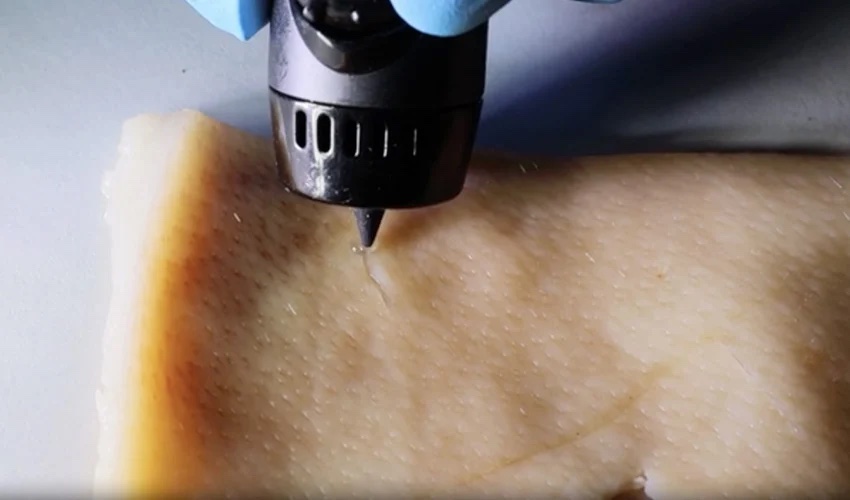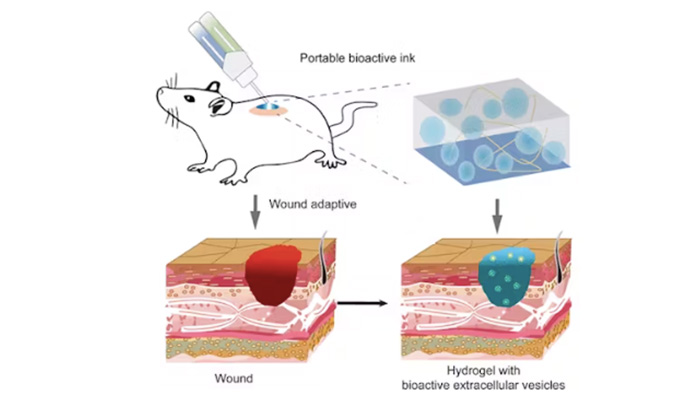PAINT Ink and a 3D Printing Pen Could Help Accelerate Wound Healing

When the skin is cut, the body is able to react on its own, sending healing mechanisms to the wound such as clotting elements and white blood cells to prevent infection. However, when the wound is more extensive, an intervention is required to help the body heal itself better. Bandages or stitches are then placed on the skin to promote natural healing, while antibiotics are administered to prevent infection. These are the most widespread procedures, but a new technique could revolutionize the way wounds are treated using 3D printing and a new ink.
In a study published in ACS Applied Materials & Interfaces, Nanjing University researchers Dan Li, Xianguang Ding and Lianhui Wang have developed a revolutionary wound-healing ink designed to accelerate the body’s natural healing process. Dubbed portable bioactive ink for tissue healing, or PAINT, it is a bio-material capable of healing all forms of wounds. It is composed of a mixture of macrophage-derived vesicles and sodium alginate. These vesicles, secreted by white blood cells, play an important role in the formation of blood vessels and the reduction of inflammation during healing. This ink is applied directly to the wound and acts as a gel.

PAINT ink accelerates wound healing in both humans and animals (photo credits: Nanjing University)
PAINT Ink Speeds Up Healing
To deposit the ink on the wound, the researchers used a 3D printing pen capable of extruding the substance. According to the scientists, the bio-material solidifies in three minutes, creating a protective layer directly on the wound. It can then be placed over the sutured or bandaged wound to speed up the healing process. The results of their research are promising, with the researchers demonstrating that the ink promotes blood vessel formation and reduces inflammatory markers.
In fact, PAINT has already been tested on injured mice. According to the scientists, the rodents in question had almost completely healed a large wound after 12 days. By comparison, mice that did not receive the treatment were not as advanced in the healing process at this stage. “The treatment of skin wounds involving complex biological processes has become an important public health issue worldwide,” explains the research team. This ink then has an interesting potential that could enable minor or major wounds to be treated more quickly. And of course, the use of a 3D printing pen also make it convenient for doctors, showing once again the versatility of 3D technologies in medicine. To find out more about PAINT ink, click HERE.
What do you think about PAINT ink? Let us know in a comment below or on our LinkedIn, Facebook, and Twitter pages! Don’t forget to sign up for our free weekly Newsletter here, the latest 3D printing news straight to your inbox! You can also find all our videos on our YouTube channel.
*Photo Credits : Nanjing University






